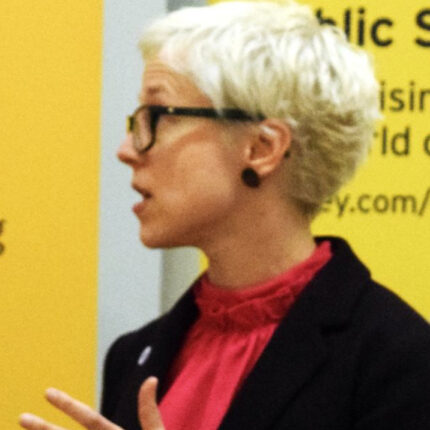Amid the public debate about coronavirus, Brexit and the American election, you would be forgiven for missing last week’s speech by the Prime Minister on post-secondary skills and education.
It was the first major speech on HE reform since the Augar report last year. It hasn’t had big coverage but it signals some significant policy moves afoot, to be detailed in a forthcoming white paper. Here are the big shifts on their way, and some predictions about the debate that will ensue.
From student led to labour-market led
Currently, further and higher education are generally agnostic about subject; policy does not distinguish between a student wanting to study computer science and sociology, despite the labour market having much higher demand for skills in the former than the latter.
The Prime Minister indicates he will change this, at least in the FE sector, by funding the A level equivalent courses that the economy needs (however defined), as well as the “bootcamps” in various parts of the country to train people in digital skills.
I’ve argued before that in a post Brexit economy with tight immigration controls, the government will need to be much more deliberate about growing the skills and talent our economy needs in the UK. Funding training in shortage areas could be a good way of closing that gap.
It is not yet clear whether the distinction between valuable and invaluable courses will be made in both HE and FE, or just the latter. Either way, expect a debate about the value of learning for its own sake, both for individuals and the wider economy, versus employability. Also, watch out for the locations of these new bootcamps, and the tie-in with levelling up and industrial strategies.
From one chance to many
The Prime Minister is right to argue that the post-18 education funding system is built around the idea that someone goes to university for three years, full time, and then never does any formal training ever again. There were echoes of Lord Leitch’s review of skills as the Prime Minister noted the vast majority of the 2030 workforce is already in the workforce.
In the modern workplace – with fast changing skills needs – people need to be able to upskill and re-skill throughout their working lives. The new lifetime skills guarantee is intended to provide this flexibility. But questions abound about implementation of the policy and funding mechanisms. What if someone uses up their guarantee and still needs to retrain? What if it’s in a shortage skill area? How should we balance investment between employers, the government and the individual?
From university to vocational training
The Prime Minister criticises the growing number of debt-laden graduates in non-graduate jobs, some of whom are beginning to ask, “was it worth it?” He is right to say that the 50 per cent of young people who do not go to university get much less investment in their training than university students, comparing the UK unfavourably with our European neighbours who have double the number of people with technical qualifications. His solution is to break down the “pointless, snooty, and frankly vacuous distinction” between practical and academic training.
On top of the £1.5bn funding to rebuild FE colleges (overdue, nowhere near enough, but better than nothing), the lifetime skills guarantee will enable people to take out loans to study at FE as well as HE, thus “levelling up” FE.
Similarly, there will be (yet another) expansion of apprenticeships. Note the ambition for more flexibility in apprenticeships, enabling people to take them from one employer to another. This is technically already possible, if the new employer and training provider is happy to support the move, though in practice it can be tricky.
This big ambition is bold and right. Many who have come before him have made the same argument. But implementation faces two fundamental challenges.
First, how do we pay for it? Given the public finances, there is unlikely to be new money to plough into vocational learning. So the Prime Minister is faced with the rock of reducing university funding to pay for FE, and the hard place of asking individuals or employers to contribute more.
Second, can we change social perceptions and choices about vocational training? The rational case for this shift is clear, but as long as parents, teachers and wider society perceive university as “the best thing for my kids” and vocational training as for “other peoples’ children” the Prime Minister won’t achieve the dramatic changes he wants.













